Recent Articles
Popular Makes
Body Types
2017 Chrysler Pacifica Hybrid Road Test and Review
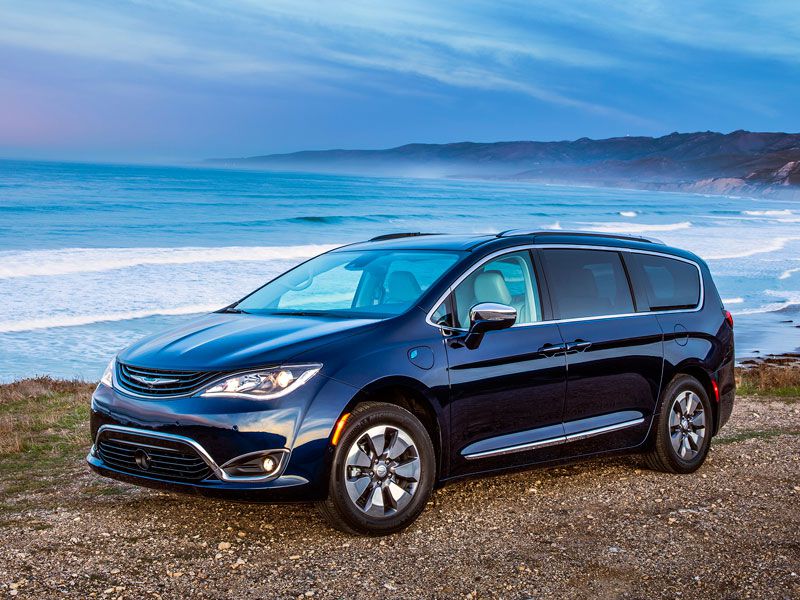
2017 Chrysler Pacifica e Hybrid minivan exterior hero ・ Photo by Chrysler
Chrysler was first on the scene with the modern minivan in 1984 (whatever Volkswagen may say to the contrary), and even though the company has undergone a couple major sea changes since that time, Chrysler is now the first with a hybrid version. Make that first and only. This on the heels of a major makeover that arguably took the new Pacifica to the head of its class.
The Plug-in Factor
We mentioned the Pacifica is first-ever hybrid minivan, but wait, there’s more. It’s also Chrysler’s only hybrid. And it’s not just a garden variety gasoline-electric hybrid—it’s a plug-in hybrid. That means it’s capable of operating as a pure electric vehicle—no fuel going into the intake system, nothing coming out of the tail pipe—until the lithium-ion battery pack is depleted and the engine kicks in. Chrysler pegs the Pacifica’s max electric range at 30 miles.
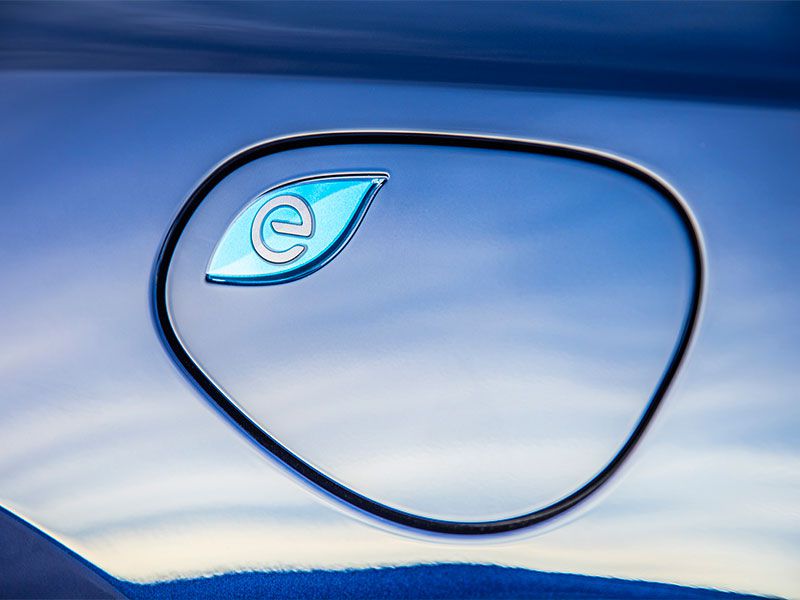
Photo by Fiat Chrysler Automobiles
Integrated Electrics
First-ever applies to minivan hybridity, but not to the Pacifica’s technical features, which may be seen, conceptually at least, in other systems. The internal combustion component is Chrysler’s 3.6-liter V6, adapted to hybrid application with Atkinson cycle programming and a higher compression ratio (12.5:1 versus 11.3:1) than the standard version of the V6. The EV propulsion element is supplied by a pair of electric motors integrated with the “electrically variable” automatic transmission, another way of saying continuously variable. One or both of the electric motors can contribute to driving the vehicle, and also contribute to recharging the battery pack.
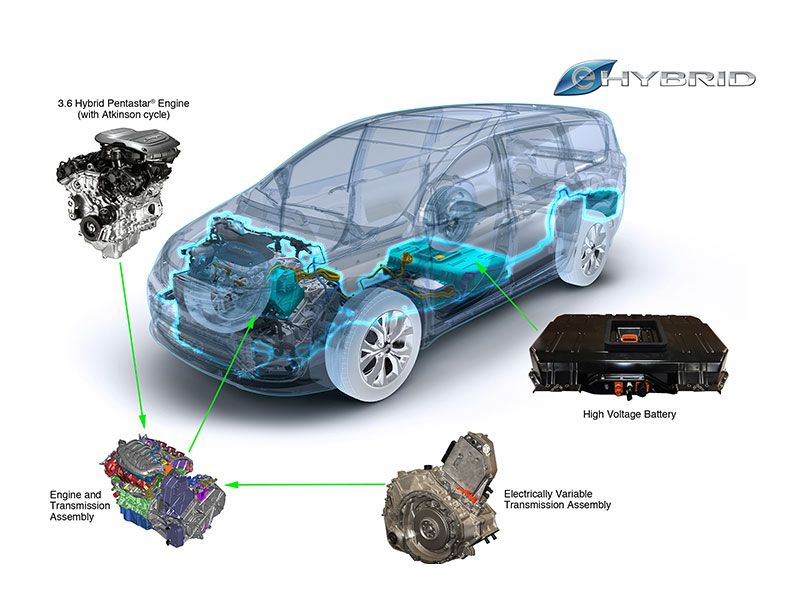
Photo by Fiat Chrysler Automobiles
Battery Metric
According to Chrysler, the Pacifica Hybrid weighs 4943 pounds, 613 lb. more than the regular gasoline edition. Moving something that big on pure electric power, even for as little as 30 miles, requires a substantial battery pack. The Pacifica’s pack consists of 96 lithium-ion cells, rated at 16 kilowatt hours. Batteries are heavy—note the curb weight disparity—and gobble up a lot of space. Chrysler created space for the Pacifica’s battery collection under the floor, beneath the middle row of seats. As a solution, it’s effective, but there is a downside. More on that later.
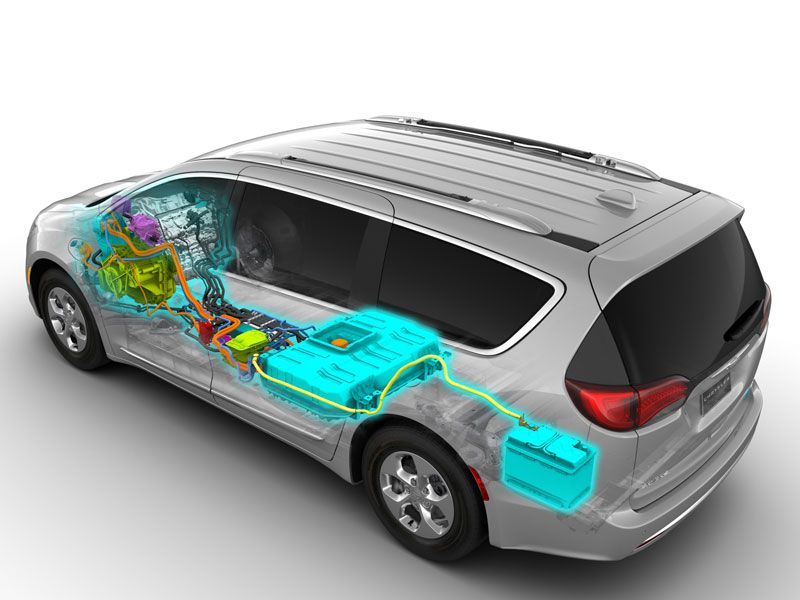
Photo by Fiat Chrysler Automobiles
Power and Thrift
Chrysler is oddly reticent on the subject of power output for the various sources, gasoline and electric. In the standard Pacifica the 3.6 V6 is rated for 287 horsepower and 262 lb.-ft. of torque. There are no specifics on horsepower and torque of the Atkinson-cycle 3.6, nor the power ratings of the electric motors. Chrysler will say only that the maximum system output is “about 260 horsepower.” However, the company is willing to release an anticipated EPA MPGe projection—miles per gallon equivalency—of 84, and a maximum range of 530 miles before the 17-gallon tank needs refilling. With regular fuel.
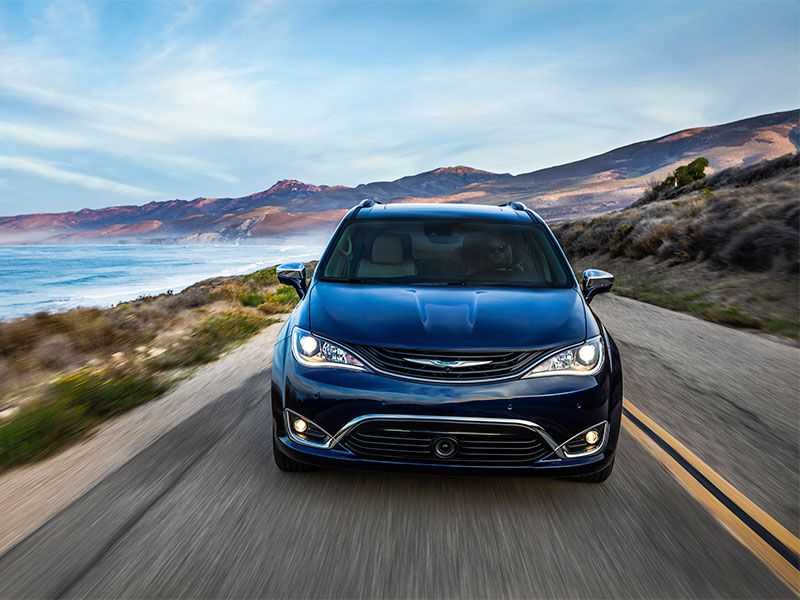
Photo by Fiat Chrysler Automobiles
Recharging
Like other plug-in hybrids, the 2017 Chrysler Pacifica offers two levels of battery recharging, one slow, one considerably faster. The standard 120-volt system, included with the vehicle, takes up to 14 hours on ordinary household current. The optional 240-volt charger cuts that time down to as little as two hours, making the hybrid much more viable for ordinary commuting duty. As an aside, when hybrids rolled onto the scene, battery life was a concern, since the cost of replacing a battery pack in a car more than two years old was pretty much a zero-sum game—there would be no value left in the car. That has changed over the years, as batteries continue to exceed life expectancy, As a result, carmakers have increased their battery warranties, and the Pacifica is a leader with a battery pack warranty good for up to 10 years or 150,000 miles.

Photo by Fiat Chrysler Automobiles
Tracking Performance
A fun-to-drive element unique to hybrids is monitoring what’s going on with their sophisticated systems—battery usage, battery replenishment via regen braking and coasting, remaining charge, gasoline engine participation, etc. Chrysler calls its version of system tracking Hybrid Electric Pages, displayed on the standard 8.4-inch center dash touchscreen, which includes an expanded edition of the corporate Uconnect infotainment system. Among other features the Pages system allows owners to track power flow, review system use history, and schedule recharging. There’s also a 7-inch screen in the primary instrument binnacle that constantly monitors operating mode (electric or hybrid) by changing color, and includes an “efficiency coach” feature, suggesting how the driver can operate with optimum thrift.
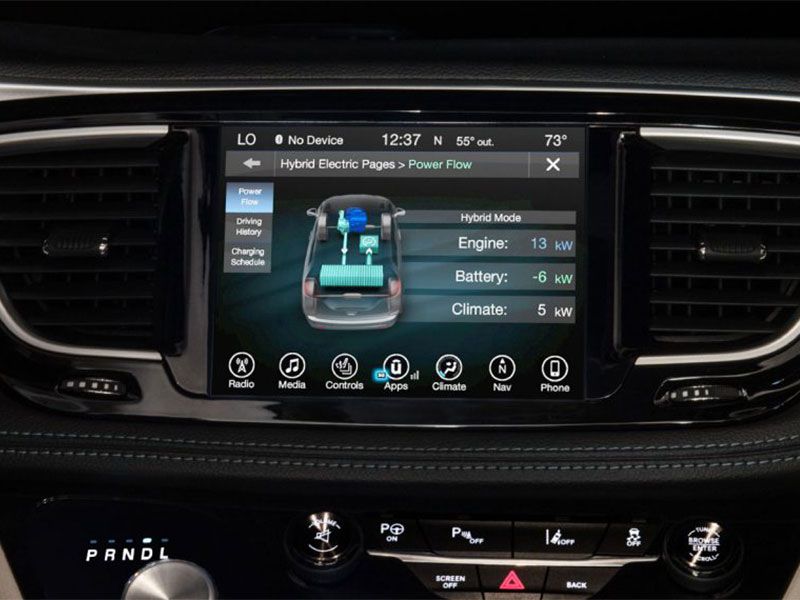
Photo by Fiat Chrysler Automobiles
Stow ‘n Go Compromise
Among many thoughtful features, Chrysler enhanced its minivans with Stow ‘n Go seating, the marketing name for a clever system that allows owners to fold second- and third-row seats into the floor, creating a flat floor for the cavernous rear cargo area. However, in the Pacifica Hybrid, the design team was challenged with finding space for the lithium-ion battery pack, and the most logical place was under the center seats. In addition to preserving a flat floor, it puts the mass of the battery pack in the middle of the vehicle, a plus in the handling department. However, it took Stow ‘n Go off the menu. Owners can still achieve maximum cargo capacity, but it requires removing the center row seats. Chrysler suggests this requires little more effort than Stow ‘n Go, but we beg to differ.
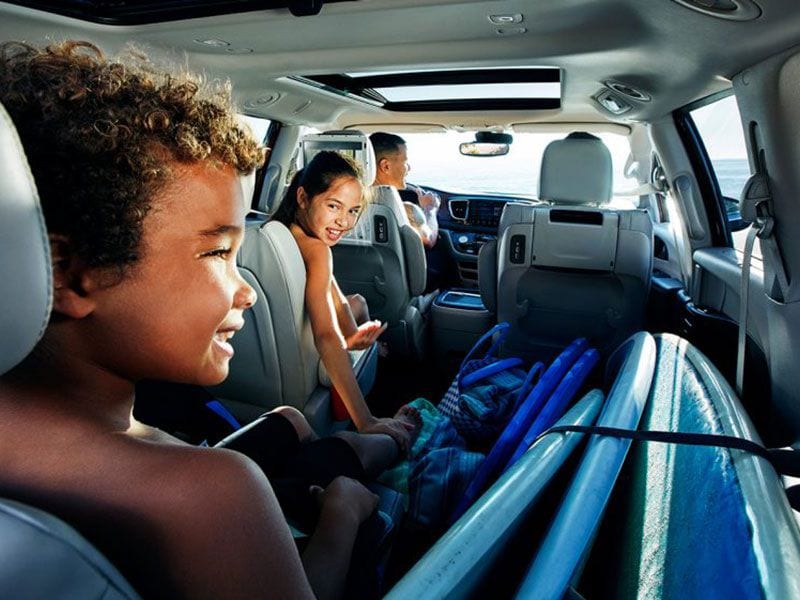
Photo by Fiat Chrysler Automobiles
Understated Green
There are two approaches to hybrid styling—the Toyota approach established with the Prius, a dedicated separate model with which the owner makes clear his or her commitment to operating with low emissions, and the more subtle approach taken by many carmakers, in which the hybrid is simply a variation of an existing model with modest exterior distinctions. The Pacifica Hybrid falls into the latter category, differentiated from the regular gasoline version by different grille and wheel designs, hybrid badges of course, and a dedicated exterior color—Silver Teal—with nine other regular Pacifica hues on the palette.
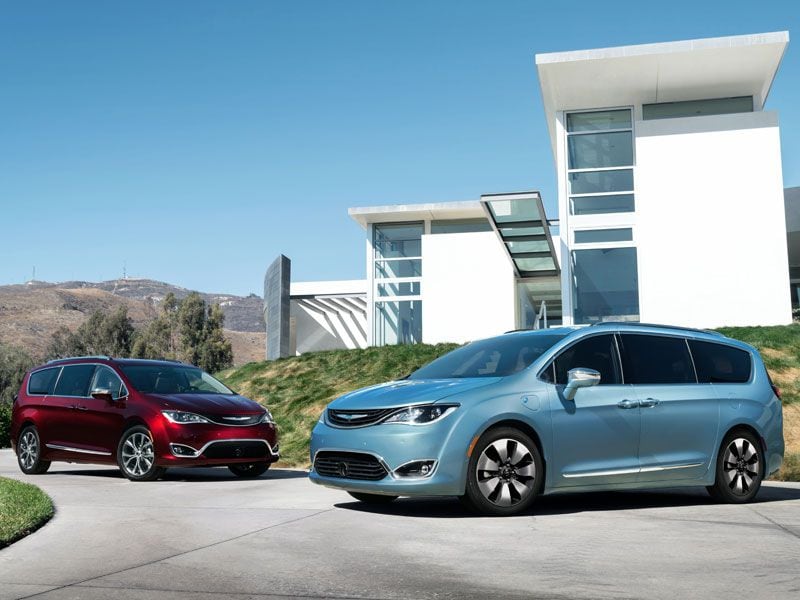
Photo by Fiat Chrysler Automobiles
Driving
Aside from the absence of a tachometer and the wealth of hybrid telemetry on the various displays, driving the Pacific Hybrid isn’t vastly different from the conventionally powered standard version. There’s a definite sense of increased mass. An increase of 600 pounds and diminished total system power (versus the standard Pacifica’s V6) is impossible to ignore. On the other hand, the Hybrid gets out of the starting blocks with reasonable zeal, and operates smoothly in pure electric mode up to and including highway speeds. Chrysler cites a max electric range of 30 miles; we logged 26 before the engine came to life, on mountain roads, paying no attention to the efficiency coach. Not bad. The transition from electric to gasoline power is totally seamless, and while electric operation is quiet as a library at midnight, the onset of gasoline power adds very little to interior noise levels. The Hybrid is dynamically competent, though the added curb weight makes handling responses more deliberate than in the standard Pacifica, and will probably affect braking distances. But the distinctions will undoubtedly be academic to owners, and the comfort quotient is high.
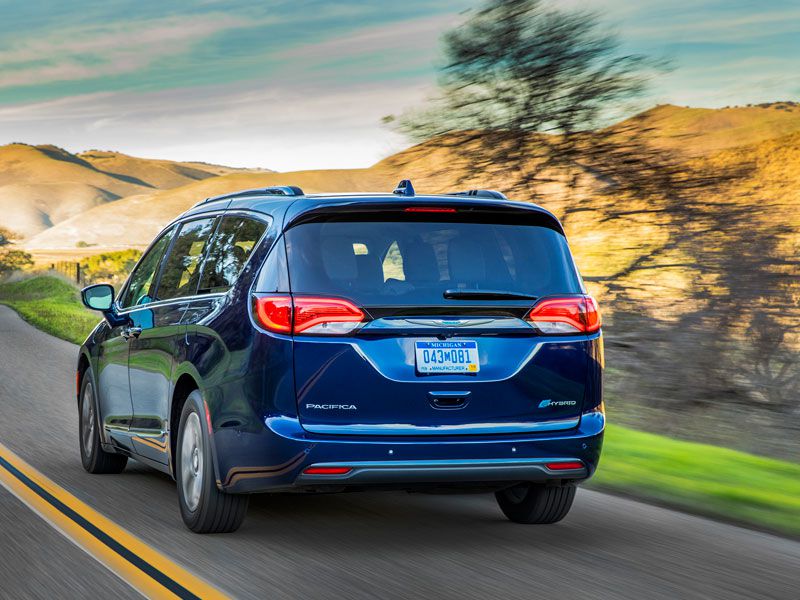
Photo by Fiat Chrysler Automobiles
High Price of Green
The components that go into any gasoline-electric hybrid vehicle raise its cost of production well beyond that of its conventional counterparts, and that’s true of the Pacifica Hybrid. The basic Pacifica starts at $29,590, and the MSRP climbs through the various trim levels to a loaded-with-everything $43,490. The basic Pacifica Hybrid (aka Premium) starts a little south of that at $42,190, well equipped but not maxed out—for example, that price does not include navigation. The Platinum version, the only other Hybrid trim, starts at $45,190. However, like other hybrid purveyors, Chrysler points out that the Pacifica will benefit from the $7500 hybrid and electric car subsidy, as well as various state tax breaks. The bottom line: For anyone seeking minivan usefulness, hybrid fuel economy, and green cachet, Chrysler—and only Chrysler—has the answer.
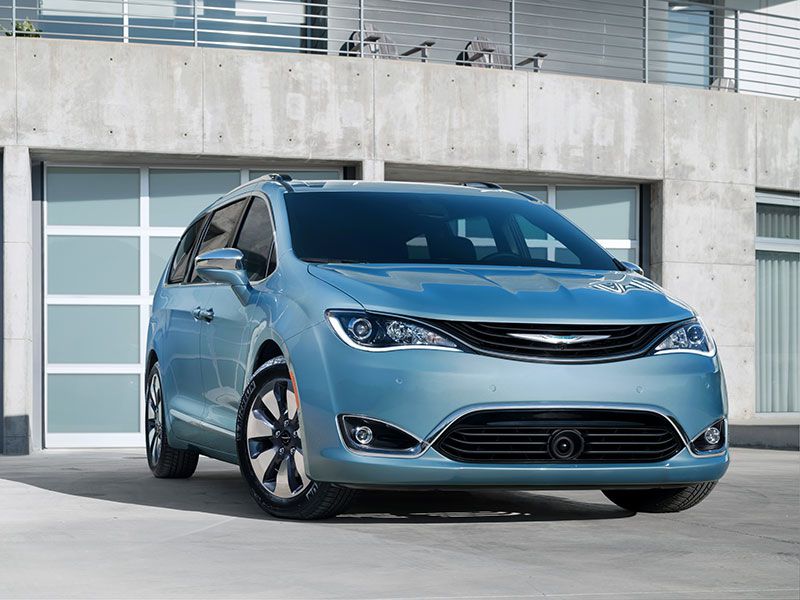
Photo by Chrysler